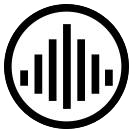
|
1 SACD
✓ in stock |
€ 20.95
|
Buy |
| Label Challenge Classics |
UPC 0608917284522 |
Catalogue number CC 72845 |
Release date 24 April 2020 |
"With good judgment, Demeyere found the contrast between one and the other interesting when programming them together. In short, a recital intelligently...."
Ritmo, 01-2-2022Wolfgang Amadeus Mozart, whose actual name is Joannes Chrysotomus Wolfgangus Theophilus Mozart, was a composer, pianist, violinist and conductor from the classical period, born in Salzburg. Mozart was a child prodigy. Already competent on keyboard and violin, he composed from the age of five and performed before European royalty. Along with Johann Sebastian Bach and Ludwig van Beethoven, Mozart is considered to be one of the most influential composers of all of music's history. Within the classical tradition, he was able to develop new musical concepts which left an everlasting impression on all the composers that came after him. Together with Joseph Haydn and Ludwig van Beethoven he is part of the First Viennese School. At 17, Mozart was engaged as a musician at the Salzburg court, but grew restless and traveled in search of a better position. From 1763 he traveled with his family through all of Europe for three years and from 1769 he traveled to Italy and France with his father Leopold after which he took residence in Paris. On July 3rd, 1778, his mother passed away and after a short stay in Munich with the Weber family, his father urged him to return to Salzburg, where he was once again hired by the Bishop. While visiting Vienna in 1781, he was dismissed from his Salzburg position. He chose to stay in the capital, where he achieved fame but little financial security. During his final years in Vienna, he composed many of his best-known symphonies, concertos, and operas, and portions of the Requiem, which was largely unfinished at the time of his death.
With good judgment, Demeyere found the contrast between one and the other interesting when programming them together. In short, a recital intelligently....
Ritmo, 01-2-2022
This valuable record reveals the harpsichordist Ewald Demeyere in all his skill who, although aware that the two musicians attended respectively the clavichord (the most illustrious son of the great Bach) and the fortepiano (the genius of Salzburg) deliberately chose to propose them again. and "putting them together" on harpsichord because they both knew it very well and obviously played it.
Amadeus, 01-2-2021
From a stylistic point of view, these performances have not entirely convinced me.
Music web International, 09-11-2020
A beautiful sound lecture about historical performance practice, style differences and musical influence.
De nieuwe Muze, 04-9-2020
Precise and imaginative play by Demeyere.
Luister, 17-7-2020
... you can’t wish for a better bonus than Ewald Demeyere conveying it all to you in a wealth of sound signed Bert van der Wolf.
HR audio, 02-5-2020